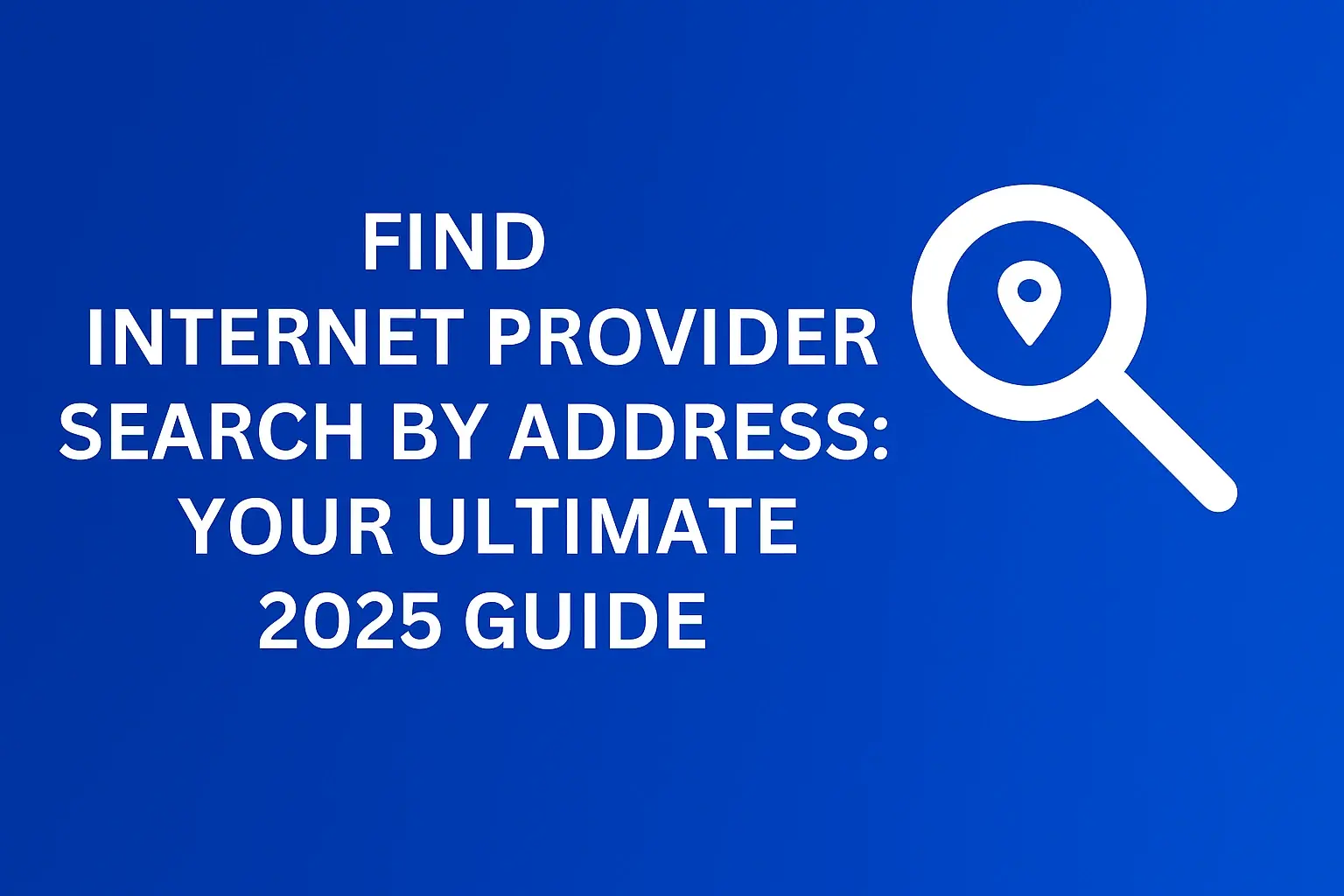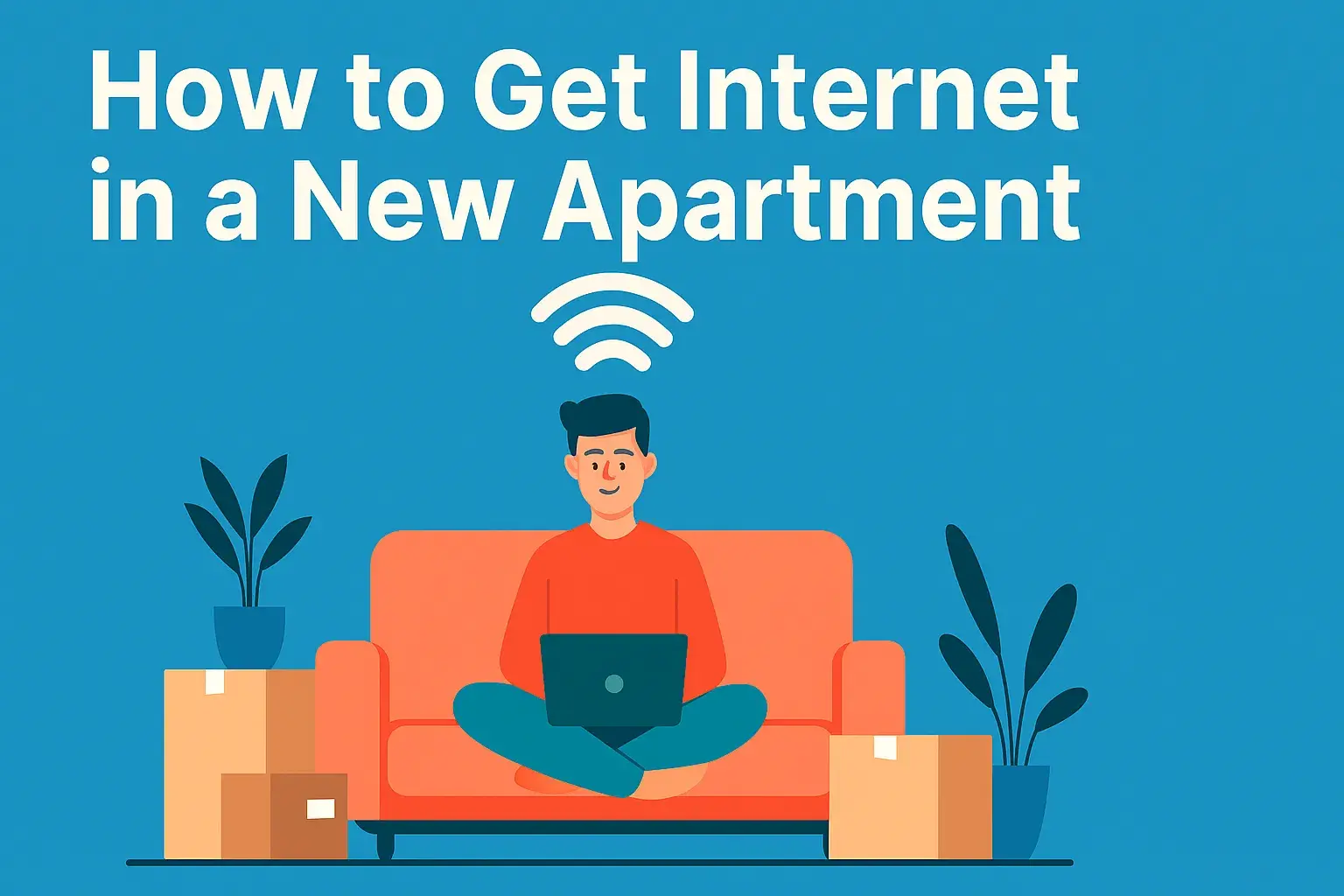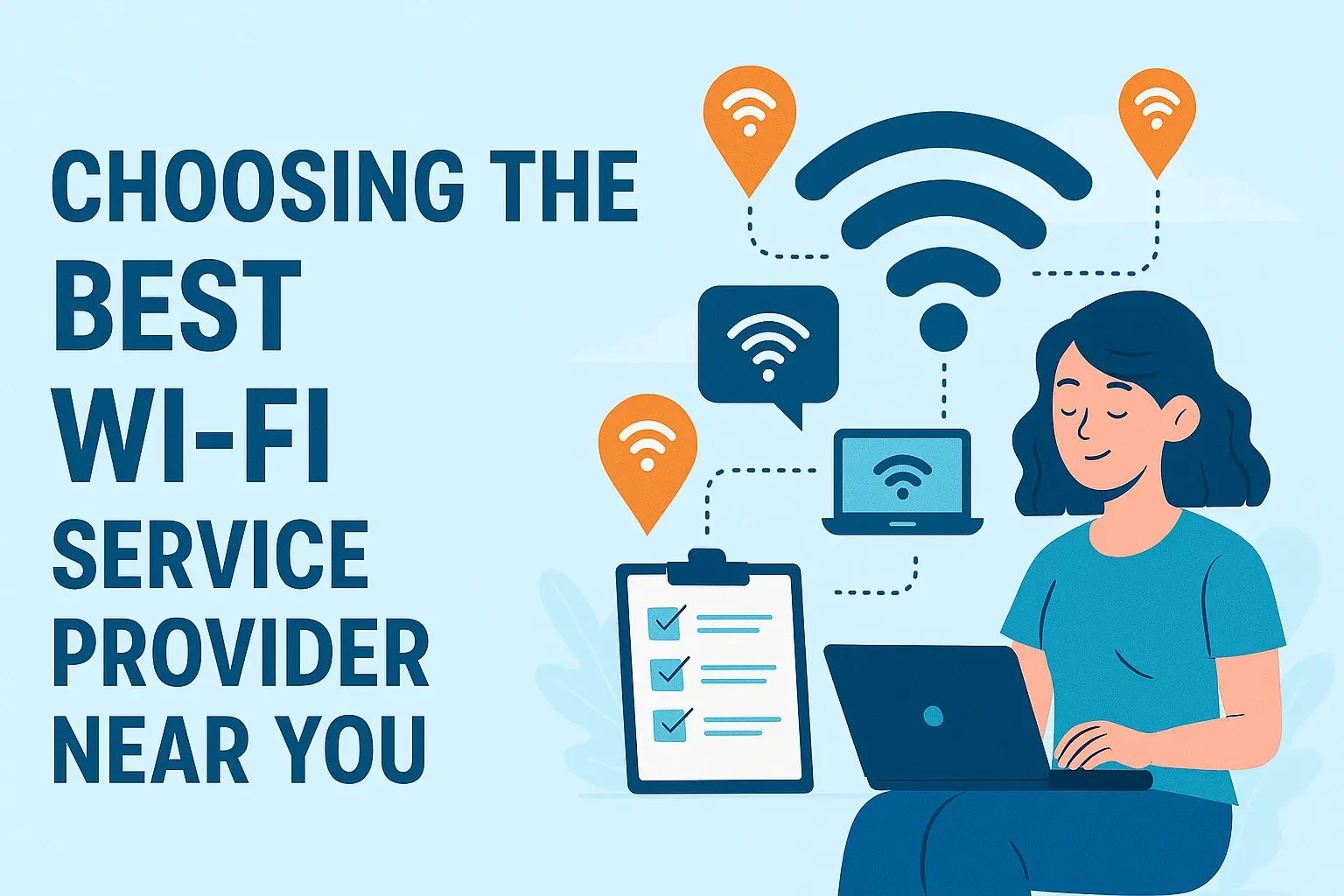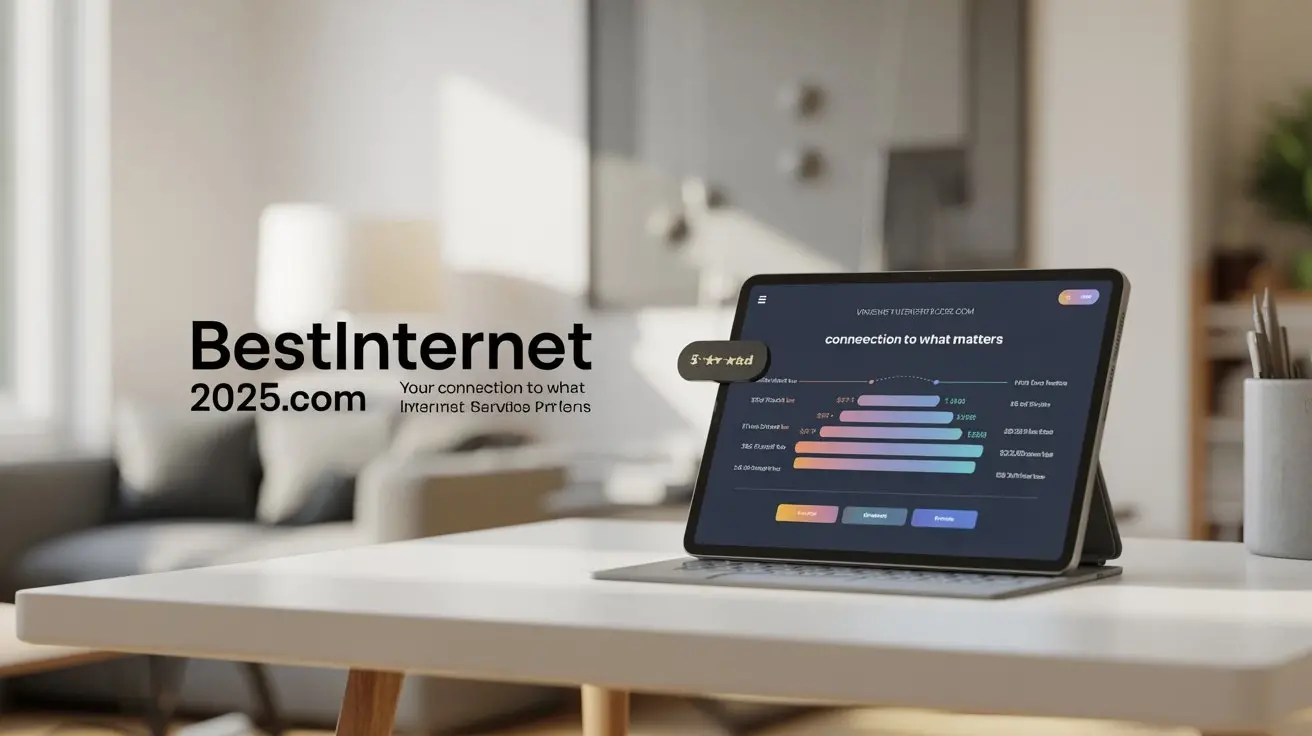Fastest Internet Speed Provider in 2025: Unlocking Gigabit Speeds & Beyond!
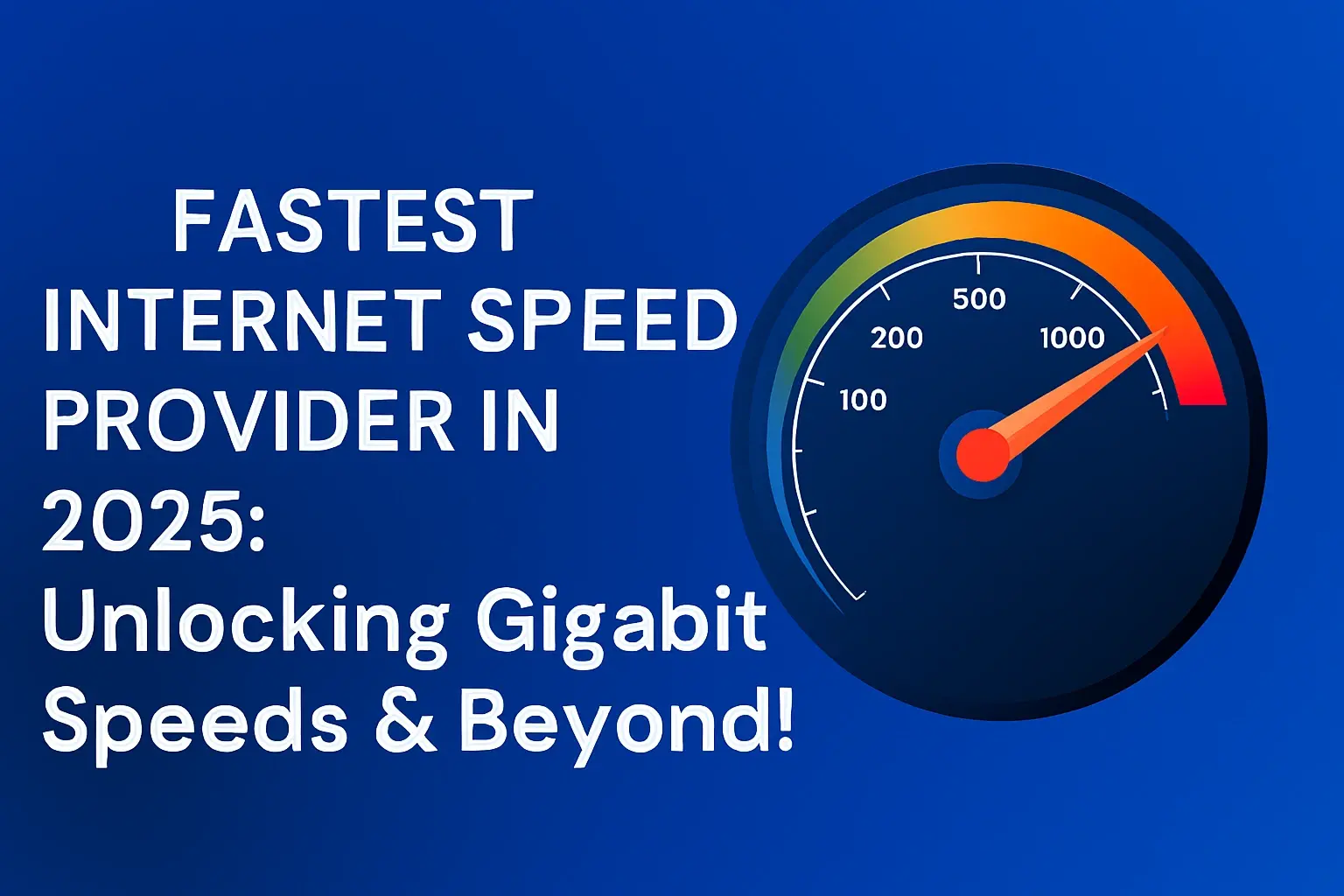
Struggling with slow internet? In 2025, the fastest internet speeds will be more accessible than ever. Discover top providers offering gigabit and multi-gigabit connections, understand the power of fiber optics, and find the perfect plan for seamless streaming, lag-free gaming, and efficient remote work.
Table of Contents
-
Top Internet Speed Providers for Lightning-Fast Connections in 2025
-
Beyond Advertised Speed: Factors Affecting Your Actual Internet Performance
-
Real-World Applications: How Fastest Internet Transforms Your Digital Life
What Truly Defines the Fastest Internet Speed in 2025?
When we discuss the "fastest internet speed provider" in 2025, we're not just considering a single download speed. It's a combination of factors that contribute to a superior online experience. This includes:
-
Blazing Download Speeds: The headline figures are often measured in Gigabits per second (Gbps). For 2025, this means looking for providers offering 1 Gbps, 2 Gbps, 5 Gbps, or even 10 Gbps symmetrical speeds.
-
Robust Upload Speeds: Crucial for video conferencing, uploading large files, live streaming, and cloud backups. Symmetrical speeds (download = upload) are the gold standard.
-
Low Latency (Ping): The time it takes for data to travel from your device to a server and back. Essential for real-time applications like online gaming and video calls. Lower is better, ideally under 20ms.
-
Consistent Performance: Reliable speeds that don't fluctuate wildly, especially during peak hours.
-
Network Congestion: How many users are sharing the same network infrastructure? Providers with extensive fiber networks tend to manage congestion better.
Competitors often focus solely on download speeds. However, true speed leadership in 2025 requires a holistic approach, emphasizing symmetrical speeds and low latency for a truly seamless experience.
Top Internet Speed Providers for Lightning-Fast Connections in 2025
The landscape of ultra-high-speed internet is dominated by fiber optic technology. While availability varies by region, these providers consistently lead the pack in offering the fastest internet speeds nationwide and in major metropolitan areas for 2025:
Leading Fiber Optic Providers (2025)
These providers are at the forefront of delivering multi-gigabit internet speeds, leveraging their extensive fiber optic networks.
|
Provider |
Max Advertised Speeds (Download/Upload) |
Key Technologies |
Typical Availability |
Notes |
|---|---|---|---|---|
|
Google Fiber |
2 Gbps / 2 Gbps (or 5 Gbps / 5 Gbps in select areas) |
Fiber Optics |
Select Cities/Metropolitan Areas |
Known for transparent pricing and excellent customer service. Early adopter of multi-gigabit. |
|
Verizon Fios |
2 Gbps / 2 Gbps (or 3 Gbps / 3 Gbps in select areas) |
Fiber Optics |
Northeastern US, select other regions |
Highly reliable with symmetrical speeds. Offers competitive multi-gigabit options. |
|
2 Gbps / 2 Gbps (or 5 Gbps / 5 Gbps in select areas) |
Fiber Optics |
Nationwide expansion, strong in many metro areas |
Consistent performance and expanding availability of 2 Gbps+ plans. |
|
|
Xfinity (Comcast) |
Up to 2 Gbps (Download) - Upload speeds vary significantly by plan and technology (often lower for non-fiber) |
Hybrid Fiber-Coaxial (HFC) and Fiber Optics |
Nationwide |
Offers high download speeds via DOCSIS 4.0 in some areas, but true multi-gigabit symmetrical is typically fiber-exclusive. Check specific plan details. |
|
CenturyLink (Quantum Fiber) |
Up to 1 Gbps / 1 Gbps (Fiber plans) |
Fiber Optics |
Select areas, expanding rapidly |
Focusing on fiber build-out, Quantum Fiber offers competitive symmetrical speeds. |
|
2 Gbps / 2 Gbps (or 5 Gbps / 5 Gbps in select areas) |
Fiber Optics |
Expanding rapidly, particularly in former Verizon territories |
Aggressively deploying multi-gigabit fiber. |
Key Takeaway: For the absolute fastest and most reliable internet speeds in 2025, prioritize providers that offer 100% fiber optic connections with symmetrical upload and download speeds.
Fiber Optics: The Undisputed Champion of Internet Speed
Why is fiber optic the king of speed? Unlike traditional cable (coaxial) or DSL (phone lines), fiber optic cables transmit data using light pulses through thin strands of glass or plastic. This fundamental difference offers unparalleled advantages:
-
Immense Bandwidth: Light can carry vastly more data than electrical signals over copper wires. This allows for speeds that are orders of magnitude faster.
-
Symmetrical Speeds: Fiber networks are designed to handle equal amounts of data flowing in both directions, leading to identical download and upload speeds. This is a game-changer for modern internet usage.
-
Lower Latency: Light travels incredibly fast, resulting in minimal delay (latency) for data transmission.
-
Immunity to Interference: Fiber is not affected by electromagnetic interference, ensuring a more stable and consistent connection, especially in areas with lots of electronic devices.
-
Future-Proofing: Fiber optic infrastructure is built to handle future speed demands, meaning your connection can grow with technology without needing a complete overhaul.
The Limitations of Other Technologies
While technologies like DOCSIS 4.0 (used by some cable providers) are improving download speeds, they still face inherent limitations compared to fiber:
-
Asymmetrical Speeds: Cable networks are inherently designed for higher download than upload speeds due to their architecture.
-
Distance Degradation: Signal strength can degrade over longer distances in copper-based networks, impacting speed and reliability.
-
Susceptibility to Interference: Electrical signals in copper can be disrupted by external factors.
For the fastest internet experience in 2025, especially if you need high upload speeds for professional use or demanding online activities, fiber optic internet is the clear winner.
Decoding Speed Tiers: What Do Those Numbers Really Mean?
Internet plans are often advertised with speeds like "up to 1 Gbps" or "up to 2 Gbps." But what does this mean for your daily use? Here’s a breakdown of common speed tiers and what they enable in 2025:
Speed Tier Breakdown
-
100 Mbps - 300 Mbps:
Good for: Basic internet use, streaming HD video on 1-2 devices, web browsing, email, and moderate online gaming. A single user or small household with light internet needs will find this adequate.
-
300 Mbps - 700 Mbps:
Excellent for: Smooth HD and 4K streaming on multiple devices simultaneously, robust online gaming with low ping, efficient cloud backups, and reliable video conferencing for remote work. This is a sweet spot for many households.
-
1 Gbps (1000 Mbps) - 2 Gbps:
Ideal for: Power users, large households with many connected devices, serious gamers requiring minimal latency, professionals uploading/downloading massive files, and seamless 8K streaming. This is where true multi-gigabit performance begins.
-
5 Gbps - 10 Gbps (and beyond):
Cutting-edge for: The absolute fastest internet experience. Perfect for households with dozens of devices, professional content creators, competitive esports athletes, and businesses requiring extreme data transfer capabilities. This tier is becoming more accessible in 2025 for those in fiber-rich areas.
Important Note: Advertised speeds are "up to" speeds. Your actual speed can be affected by many factors (see below). When looking for the fastest internet provider, prioritize symmetrical speeds for the best overall experience.
Beyond Advertised Speed: Factors Affecting Your Actual Internet Performance
Even with the fastest internet plan available, you might not always hit those peak theoretical speeds. Several factors can influence your real-world internet performance:
-
Your Equipment:
-
Modem/Router: An older or lower-spec router can bottleneck even the fastest connection. Ensure your router supports multi-gigabit speeds (e.g., Wi-Fi 6/6E/7 and at least a 2.5 Gbps Ethernet port).
-
Ethernet Cables: Using Cat 5e cables can limit speeds above 1 Gbps. For multi-gigabit speeds, Cat 6a or Cat 7 are recommended for wired connections.
-
Device Capabilities: Your computer, smartphone, or gaming console must also have the hardware to process high-speed data.
-
-
Wi-Fi vs. Wired Connection:
Wi-Fi is convenient but inherently less stable and slower than a direct Ethernet connection. The further you are from the router, the weaker the signal. For critical tasks requiring maximum speed and stability, a wired connection is always best.
-
Network Congestion:
Even with fiber, if a provider's network infrastructure in your specific neighborhood is overloaded during peak times, speeds can temporarily dip. Providers with robust network management and extensive fiber deployment tend to perform better.
-
Number of Connected Devices:
Each device on your network consumes bandwidth. With dozens of smart home devices, streaming services, and multiple users, a higher speed tier is essential to avoid slowdowns.
-
Server-Side Limitations:
The speed of the website or server you are accessing also plays a role. If a server is slow or overloaded, your fast internet connection won't magically make it faster.
-
Provider Network Management: Some ISPs may implement traffic shaping or data caps, which can affect your perceived speed, especially on lower-tier plans.
Actionable Tip: To truly test your speed, perform a speed test using a wired Ethernet connection directly to your router, using a device capable of handling high speeds, during off-peak hours.
How to Choose Your Ideal Fastest Internet Plan?
Selecting the right high-speed internet plan involves more than just picking the highest number. Here’s a strategic approach for 2025:
-
Assess Your Household's Needs:
How many people live in your home? What do you primarily use the internet for?
-
Light Use (Browsing, Email, occasional streaming): 100-300 Mbps
-
Moderate Use (Multiple HD streams, gaming, video calls): 300 Mbps - 1 Gbps
-
Heavy Use (Multiple 4K streams, large file transfers, pro gaming, many devices): 1 Gbps - 2 Gbps+
-
-
Check Availability in Your Area:
This is the most crucial step. The fastest internet, particularly fiber, is not available everywhere. Use provider websites (Google Fiber, Verizon Fios, AT&T Fiber, etc.) to enter your address and see what plans are offered.
-
Prioritize Fiber Optics:
If fiber is available, it's almost always the best choice for speed, reliability, and symmetrical upload/download performance.
-
Compare Symmetrical Speeds:
Don't just look at download speeds. For activities like uploading content, video conferencing, or online gaming, upload speed is equally important. Aim for plans where download and upload speeds are the same.
-
Understand Pricing and Contracts:
Look beyond the introductory offer. What is the price after the first year? Are there long-term contracts required? Are there any hidden fees (installation, equipment rental)?
-
Read Reviews and Check Local Performance:
While national providers offer top speeds, local performance can vary. Check community forums or consumer review sites for feedback specific to your neighborhood.
-
Consider Your Equipment Needs:
If you're upgrading to multi-gigabit speeds, ensure your router can handle it. Some providers include a high-speed router, while others may require you to purchase or rent one.
Example Scenario: A family of four with two teenagers who game online, one parent working from home with frequent video calls, and a desire to stream 4K content on multiple TVs would benefit most from a 2 Gbps symmetrical fiber plan. This ensures smooth gaming, uninterrupted work calls, and buffer-free entertainment for everyone.
Real-World Applications: How Fastest Internet Transforms Your Digital Life
Having access to the fastest internet speeds in 2025 isn't just about bragging rights; it unlocks a new level of digital interaction and productivity.
-
Seamless 4K & 8K Streaming:
Enjoy crystal-clear, buffer-free streaming on multiple devices simultaneously. Download movies in minutes, not hours. Support for emerging 8K content becomes a reality.
-
Lag-Free Online Gaming:
Low latency (ping) is paramount for competitive gaming. Ultra-fast fiber connections provide the responsiveness needed to react instantly, giving you a significant edge. Symmetrical speeds also mean faster game downloads and updates.
-
Effortless Remote Work & Collaboration:
High-speed, stable connections with excellent upload speeds are essential for video conferencing, sharing large files, accessing cloud-based applications, and maintaining productivity when working from home.
-
Rapid Cloud Backups & File Transfers:
Backing up your entire photo library or transferring massive video projects to cloud storage can take minutes instead of days. This is a huge time-saver for professionals and hobbyists alike.
-
Immersive VR/AR Experiences:
Virtual and Augmented Reality applications, especially those streamed from the cloud, demand extremely high bandwidth and low latency. The fastest internet makes these experiences fluid and realistic.
-
Smart Home Integration:
With the proliferation of smart home devices, a robust internet connection ensures all your devices communicate seamlessly and respond instantly.
The bottom line: The fastest internet providers in 2025 are not just selling speed; they are enabling richer, more efficient, and more enjoyable digital experiences across the board.
The Future of Internet Speed: Beyond Multi-Gigabit
While 1 Gbps and 2 Gbps are considered the pinnacle for most consumers today, the pursuit of faster internet speeds never stops. The industry is already looking towards the next frontier:
-
10 Gbps and Beyond: Many providers are already rolling out 10 Gbps plans in select markets, and research into even higher speeds (25 Gbps, 50 Gbps, 100 Gbps) is ongoing.
-
Advanced Fiber Technologies: Innovations like XGS-PON (10 Gigabit Symmetrical Passive Optical Network) and NG-PON2 are enabling higher throughput over existing fiber infrastructure.
-
Wi-Fi 7: The next generation of Wi-Fi is designed to take full advantage of multi-gigabit internet speeds, offering higher throughput, lower latency, and better performance in congested environments.
-
Increased Demand: As more data-intensive applications emerge (e.g., holographic communication, advanced AI processing, hyper-realistic metaverse experiences), the demand for faster and more robust internet will only continue to grow.
The providers leading the charge in 2025 with extensive fiber networks are best positioned to deliver these future advancements.
Your Gateway to the Fastest Internet in 2025
In the quest for the fastest internet speed provider in 2025, the message is clear: fiber optic technology is king. Providers like Google Fiber, Verizon Fios, AT&T Fiber, Frontier Fiber, and CenturyLink's Quantum Fiber are leading the charge, offering multi-gigabit symmetrical speeds that redefine online experiences. We've explored how to decode speed tiers, understand the critical role of low latency and symmetrical uploads, and identified factors beyond advertised speeds that impact your connection. By assessing your household's unique needs, prioritizing fiber availability, and comparing plans carefully, you can secure an internet connection that not only keeps up but propels you forward. Don't settle for less; embrace the power of ultra-fast internet for seamless streaming, lag-free gaming, and unparalleled productivity. Take action today by checking availability in your area and choosing a provider committed to delivering the speed you deserve.
null
Faq
1. How can I check if fiber optic internet is available at my address?
The most reliable way is to visit the websites of major fiber providers like Google Fiber, Verizon Fios, AT&T Fiber, Frontier Fiber, and CenturyLink (Quantum Fiber). They will have an address checker tool. You can also use third-party comparison sites, but always verify directly with the provider.
